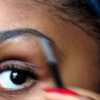
 By
Beauty Adams
By
Beauty Adams
Clean beauty is a term that has been gaining popularity in the beauty industry and among consumers. But what does it actually mean? Is it the same as natural, organic, or green beauty? How can you tell if a product is truly clean or not? And what are the benefits and challenges of embracing clean beauty? In this blog post, we will explore these questions and more, to help you understand the essence and the implications of clean beauty.
Clean beauty is not a regulated or standardized term, so different brands and retailers may have different definitions and criteria for it. However, in general, clean beauty refers to products that are formulated without any ingredients that are proven or suspected to be harmful to human health or the environment. These ingredients may include parabens, phthalates, sulfates, formaldehyde, mineral oils, synthetic fragrances, and more. Clean beauty products also tend to use natural, organic, or plant-based ingredients instead of synthetic ones, as long as they are safe and effective.
Clean beauty is not the same as natural, organic, or green beauty, although they may overlap. Natural beauty products are those that are derived from nature, such as plants, minerals, or animal sources. However, not all natural ingredients are safe or beneficial for the skin, and some may even cause allergic reactions or irritation. Organic beauty products are those that are made from ingredients that are grown without the use of pesticides, fertilizers, or genetically modified organisms (GMOs). However, not all organic ingredients are certified or verified by a third-party organization, and some may still contain traces of contaminants. Green beauty products are those that are environmentally friendly, such as those that use sustainable packaging, renewable resources, or biodegradable materials. However, not all green products are necessarily clean, as they may still contain harmful ingredients.
Therefore, clean beauty is a broader and more inclusive term that encompasses products that are safe, effective, and ethical, regardless of their source or origin. Clean beauty products aim to deliver beautiful results without compromising the health of the consumers or the planet.
Clean beauty is important for several reasons. First, it is important for our health. Many of the ingredients that are commonly used in conventional beauty products have been linked to various health issues, such as hormonal disruption, skin irritation, allergies, cancer, and more. Some of these ingredients may also accumulate in our bodies over time, causing long-term damage. By choosing clean beauty products, we can reduce our exposure to these harmful chemicals and protect our well-being.
Second, clean beauty is important for the environment. Many of the ingredients that are used in conventional beauty products are not biodegradable, meaning that they do not break down easily in nature. Instead, they end up in landfills, oceans, or waterways, where they can pollute the soil, water, and air, and harm the wildlife and ecosystems. Some of these ingredients, such as microplastics, can also enter the food chain and affect human health. By choosing clean beauty products, we can minimize our environmental impact and contribute to a more sustainable future.
Third, clean beauty is important for social justice. Many of the ingredients that are used in conventional beauty products are sourced from unethical or exploitative practices, such as animal testing, child labor, deforestation, or human rights violations. Some of these ingredients may also reflect cultural or racial biases, such as skin whitening or bleaching agents. By choosing clean beauty products, we can support ethical and fair trade practices, and promote diversity and inclusion in the beauty industry.
Choosing clean beauty products can be challenging, as there is no universal or official definition or certification for them. However, there are some tips and resources that can help you make informed and conscious decisions. Here are some of them:
Clean beauty has many benefits, but also some challenges. Here are some of them:
Here are some frequently asked questions about clean beauty:
Clean beauty is a term that refers to products that are formulated without any ingredients that are proven or suspected to be harmful to human health or the environment. Clean beauty products also tend to use natural, organic, or plant-based ingredients instead of synthetic ones, as long as they are safe and effective. Clean beauty is not the same as natural, organic, or green beauty, although they may overlap. Clean beauty is important for our health, the environment, and social justice. However, choosing clean beauty products can be challenging, as there is no universal or official definition or certification for them. Therefore, we need to be informed and conscious consumers, and use some tips and resources to help us make the best decisions for ourselves and the planet. Clean beauty is not a trend, but a movement, that aims to transform the beauty industry and the world for the better. By embracing clean beauty, we can enjoy the benefits of beauty without the risks, and express our true selves with confidence and joy.





Never miss an important update. Be the first to receive our exclusive beauty tips straight into your inbox.